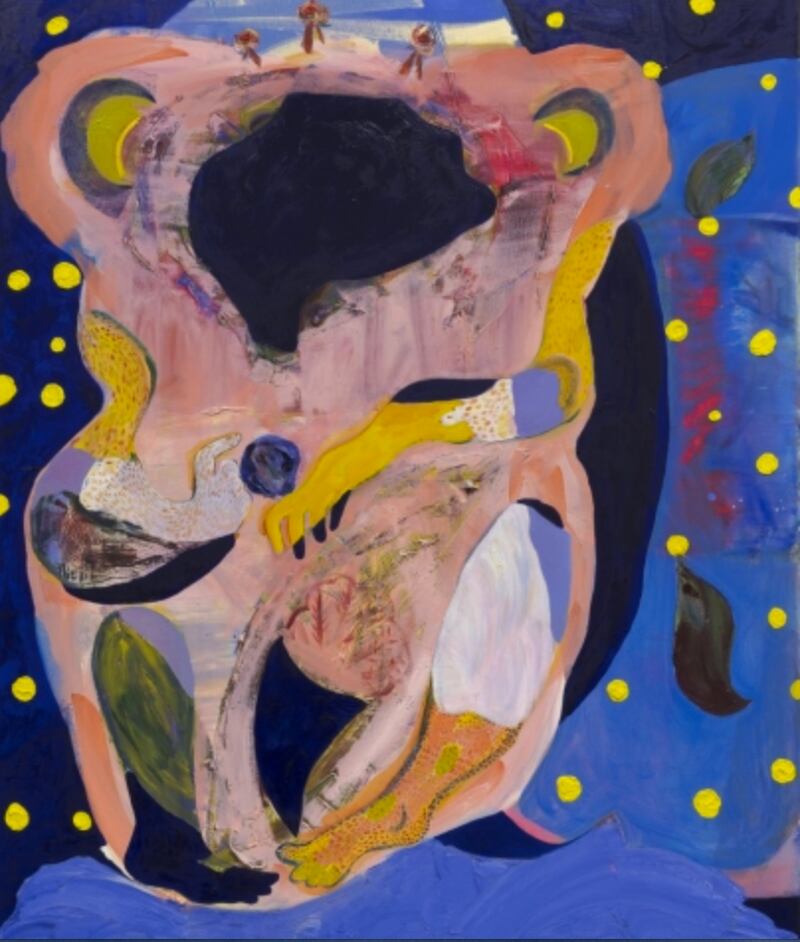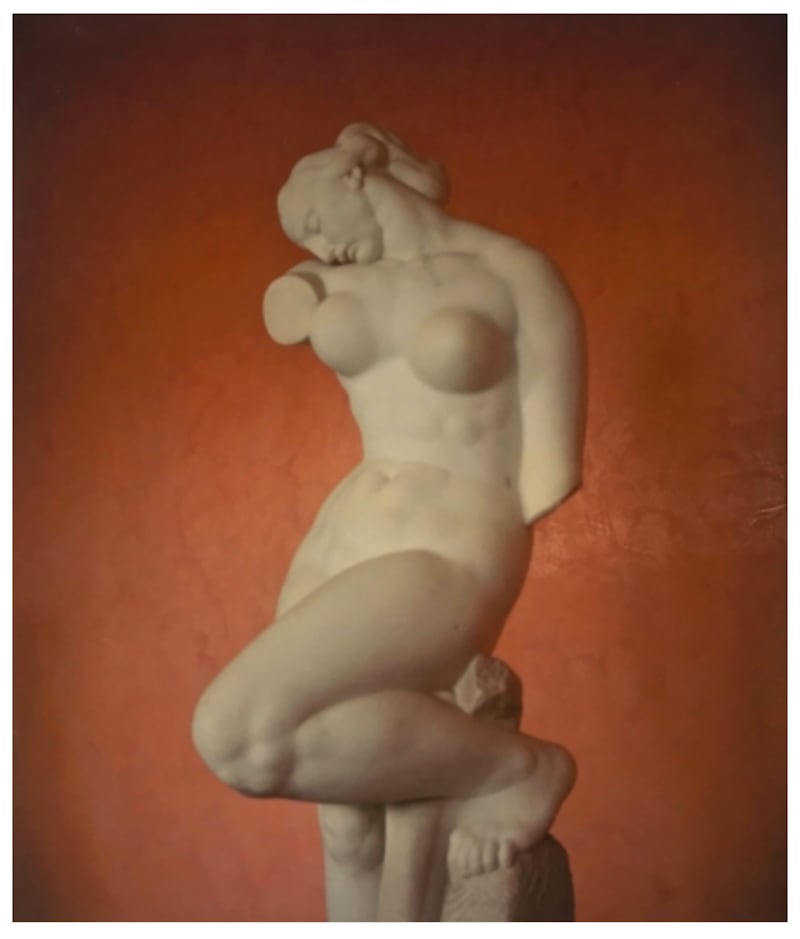Pretty Fleshy Pain Things
Amanda Doran and Sheila Rennick
Hillsboro Fine Art, 49 Parnell Sq West, Dublin
Until October 19th
hillsborofineart.com
Taken collectively, Sheila Rennick and Amanda Doran could be described as members of the Fleabag school of contemporary Irish painting. If there were such a thing. They share a distinctly feminist, dystopian sense of humour based on ruthlessly attentive close observation.
Both also convey a deep scepticism about social structures and conventions and, one could add, human nature. Both are fond of animal imagery to a striking degree. In fact, their approach to painting and imagery is broadly similar, if not entirely so.
Certainly, the work in Pretty Fleshy Pain Things suggests that Doran is the more directly representational of the two, even given that she likes and uses caricaturish exaggeration to a degree comparable to Rennick – that is, to a pretty extreme degree. It’s just that in the end, in this show at least, her compositions are usually tied, however loosely, to an actual scene rather than leaping into fantasy or surreality (as Rennick feels free to do), but who knows which direction she will take in the future.
Both use paint as an emphatically physical medium, dragging and heaping it, slathering it on, gouging into it, heightening effects with colour and bold gestural lines. No matter how well judged any particular passage in a picture is, and it usually is well judged, it should not immediately appear to be so. A certain vehemence of delivery and offhand indifference to nicety is essential. For all their similarities, their distinct personalities emerge in the tenor of their work.
It could well be that Genieve Figgis, whose work features at the moment in IMMA’s Desire show, counts as immediate precursor. Her comically, grotesquely curdled re-workings of Rococo pictures and pomp and circumstance portraits are pungent, funny and incisive. From early on she cited women painters like Jenny Saville or Marlene Dumas as influences rather than the male painters who had created the classical works that were often her starting point.

Painting Aileen Murphy
Temple Bar Gallery, 5-9 Temple Bar, Dublin
Until November 16th
templebargallery.com
Aileen Murphy’s paintings seem to focus so acutely on sensations, or moments, or perhaps aspects of embodiment, with such extreme subjectivity that conventional appearances won’t do, they are overwhelmed and distorted beyond recognition.
The state of being, or sentience, or consciousness – a continuum rather than an either-or state of affairs, come to think of it – becomes an expansive presence, even a monstrous presence, a mass that envelopes like a dense fog.
It’s reasonable to see her work as being aligned with other art that emphases individual, concrete experience in a digitised, virtual world. The paintings of Dana Schutz come particularly to mind.
The show’s accompanying text discusses such a line of approach to Murphy’s work in relation to Manuela Ammer’s interpretation of Elizabeth Murray’s paintings. The idea being that Murray’s paintings vie for attention in an age of perpetual distraction by being in several ways excessive. Much of Murphy’s painting is actually quite subtle.
The text usefully, if obliquely, draws in another point of reference, the wildly speculative notion of the development of bear cubs taken from a medieval bestiary.
To begin with, bear cubs are, it speculates, misshapen lumps of flesh. The mother takes this amorphous thing and literally licks it into shape, fashioning a cub from the mess. It’s a helpful analogy for what a painter does on the canvas, for what Murphy does, in fact.
Except that the form doesn’t become a bear, figuratively speaking, in her paintings, it’s more a vaguer presence, a being, one that eludes precise definition, despite narrative hints offered in titles or fragmentary images.
Her painting Ursula comes across as an account of a painter trying to pin down the presence in question, but delicately, through folded layers and ellipses and tentative forays.
The largest work, The Bed, a triptych, appears a bit slack, unfinished, in comparison with almost everything else.
But Murphy, who attended the prestigious Städelschule , Frankfurt after studying at NCAD, emerges as a genuinely exploratory artist, determined to sidestep the facile and formulaic.

Ode to Ivan
Dragana Jurišic
Atrium, Temple Bar Gallery, 5-9 Temple Bar
Until November 16th
templebargallery.com
Temple Bar Gallery has been making a concerted effort to use the Atrium space as a venue for some time.
It’s currently occupied by the always thoughtful work of Dragana Jurišic: three photographs from an ongoing project provisionally titled Winter Garden, plus a verse text, the ode of the title, presumably by Jurišic – and very good (writing has formed part of her work previously).
The Ivan in question is Yugoslavian sculptor Ivan Meštrovic (1883-1962), though one feels that his identification as Croatian is also relevant, given Jurišic’s experience and preoccupation with history, both personal and geopolitical.
There’s an indication in an accompanying note that the walls apparent in Jurišic’s photographs refer to the impediments she faces as a woman active in the patriarchal art world, though perhaps it would have been better to let the walls speak for themselves.
She is, incidentally, shortlisted for the Zurich Portrait Prize for her portrait of poet Paula Meehan from their collaborative book MUSEUM, about 14 Henrietta Street.











